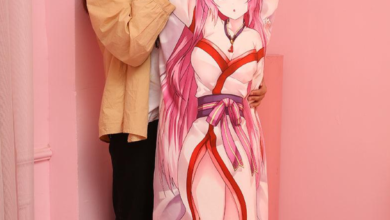The Future of Digital Art: Exploring AI, VR, and Emerging Mediums

The world of digital art is undergoing a remarkable transformation. With the introduction of artificial intelligence, virtual reality, and interactive tools, creative boundaries are being expanded like never before. For a digital artist in Fort Lauderdale, adapting to these advancements is essential for staying relevant and producing impactful work. These technologies not only change how art is created but also redefine how audiences experience and interpret it.
Shifts from Traditional to Digital Approaches
Art has always evolved alongside technology, and the transition from traditional to digital mediums is one of the most significant shifts in recent history. Traditional art is rooted in physical materials like canvas, paint, and brushes, offering tactile authenticity. Digital art, in contrast, opens the door to efficiency, precision, and limitless experimentation. The discussion around traditional art vs digital art reflects how artists today must balance heritage with innovation. Both approaches remain valid, but digital methods are increasingly dominant because they allow creators to reach broader audiences and adapt to fast-changing industry demands.
Professionals understand that digital art is not simply a replacement for traditional practices, it is an expansion of what art can be. With digital platforms, artists collaborate across continents, experiment with techniques impossible on physical canvases, and distribute work instantly to global audiences. This democratization of art allows new voices and styles to thrive, reshaping the creative ecosystem.
See also: 50 Key Real Estate Investment Tips for Beginners
The Role of AI and VR in Artistic Evolution
Artificial intelligence is one of the most disruptive tools in digital art. AI-driven software can generate unique visual patterns, suggest color palettes, and even assist in conceptualizing complex designs. While some may view this as replacing creativity, professionals see it as a collaborative partner. By automating repetitive processes, AI frees artists to focus on refinement and storytelling, pushing the boundaries of imagination.
Virtual reality is another breakthrough reshaping how audiences experience art. With VR, artists can design immersive environments that go beyond the two-dimensional plane. Instead of simply viewing an artwork, audiences can step inside it, interact with elements, and experience a narrative as active participants. This level of immersion redefines what it means to engage with art, turning it into an event rather than a static object.
Together, AI and VR demonstrate that the future of art is not about replacing human creativity but about amplifying it. They provide tools to express ideas more dynamically, while still requiring the vision and direction that only professionals bring to the table.
How Emerging Mediums Influence Branding and Identity
The rise of digital mediums is not limited to fine art, it has also reshaped branding. Businesses increasingly rely on skilled illustrators to craft visuals that stand apart in crowded markets. As consumer attention spans shrink, companies use innovative digital art to communicate values and emotions instantly.
Insights on how digital art illustrators redefine branding in today’s market show that organizations benefit from professional artistry that combines creativity with strategy. Unlike generic stock visuals, custom digital illustrations capture unique brand stories, enhance memorability, and strengthen identity. With AI and VR integration, brands now experiment with interactive logos, immersive campaigns, and digital storytelling that resonate with modern audiences.
Conclusion
Digital art’s future is defined by adaptability. AI, VR, and other emerging tools present opportunities for innovation, but they do not diminish the role of creativity. Instead, they empower artists to explore new dimensions of storytelling and expression. For professionals, embracing these changes ensures that their work remains impactful, relevant, and aligned with the evolving cultural and commercial landscape.




